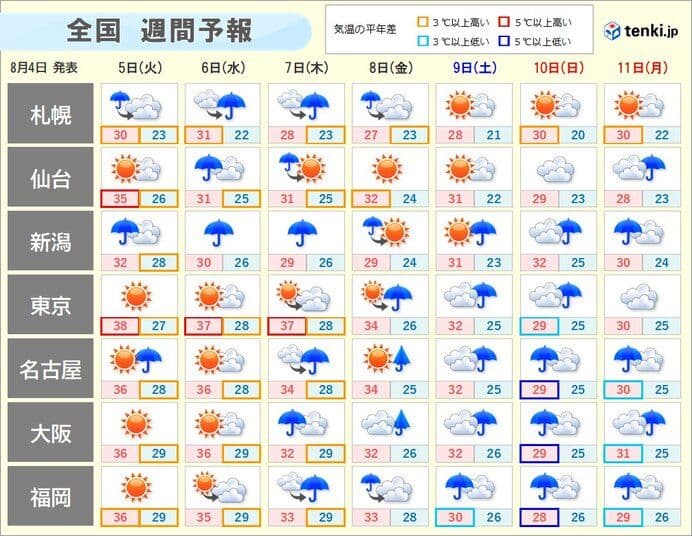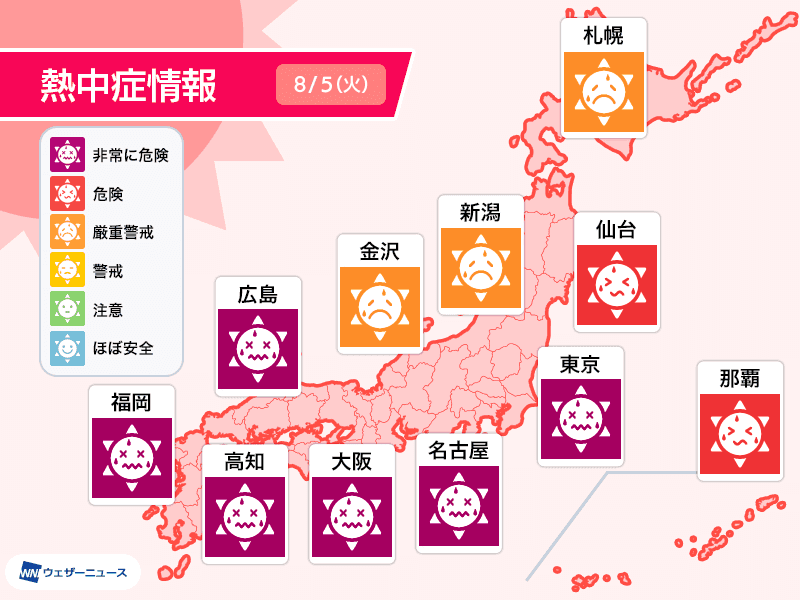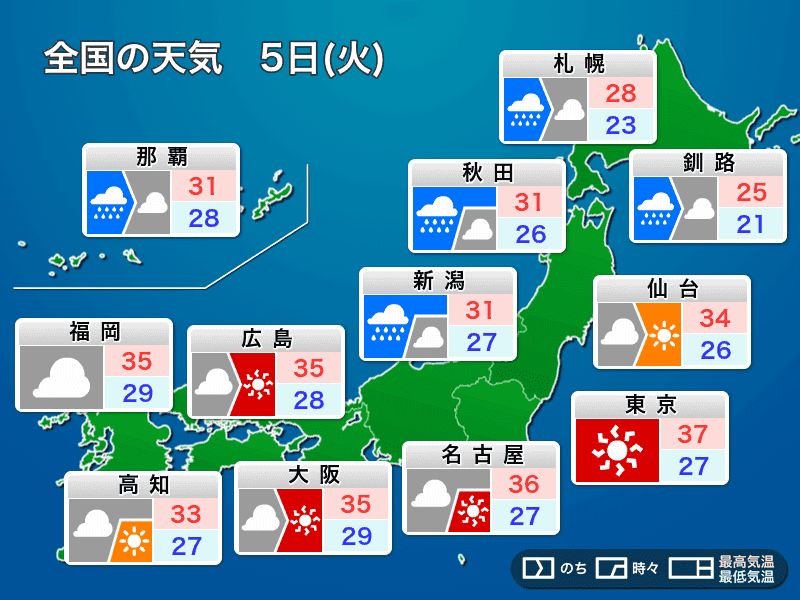The Obon Paradox: When Autumn Whispers Amidst Summer's Fierce Grip
Unlock Obon's weather secrets. From scorching days to potential relief, learn vital strategies for safety and enjoyment during Japan's complex mid-August holiday.

Japan's Mid-August Heatwave: A Stubborn Reality
As Japan steps into mid-August, the calendar might hint at autumn, but the weather tells a different story entirely. A relentless heatwave has gripped much of the archipelago, transforming what should be a time of gentle transition into a sweltering endurance test. On August 4th, for instance, 's registered a staggering 40.3°C, marking a new historical high for the observation point and highlighting a nationwide return to 40°C+ temperatures after just two days. Looking ahead to August 5th, while a welcome respite of rain is expected to cool parts of , 's , and , the rest of the country prepares for another day under the sun's harsh glare. The , in particular, is bracing for the peak of this intense heat, with forecasts predicting a scorching 42°C in , and 41°C in and . Even 's city center could hit a year-high of 38°C. This isn't just about daytime highs; the nights offer little relief, with temperatures often hovering above 30°C for most of the evening, creating a persistent and dangerous risk of heatstroke around the clock. It’s a stark reminder that summer, in Japan, has a tenacious grip, refusing to yield easily.

The Autumnal Deception: When Risshu Doesn't Mean Relief
The paradox deepens as we approach August 7th, a date traditionally marked as 'Risshu' – the official beginning of autumn according to the 24 solar terms. One might hope for a crisp, refreshing change, but the reality is far more complex. While a seasonal rain front, often referred to as the 'autumn rain front,' is anticipated to move south across from August 7th to 8th, bringing widespread rain and a temporary easing of the extreme heat in areas like , this relief is fleeting and comes with its own set of challenges. From August 9th to 11th, coinciding with the and , this front is expected to stall near Japan's southern coast. This will usher in a period of intermittent rain and humidity, reminiscent of the early summer rainy season (tsuyu), particularly across and . Although the number of 'mōshōbi' (days exceeding 35°C) may decrease, the air will remain thick with moisture, creating an uncomfortable, muggy atmosphere. This persistent humidity, coupled with the potential for temperatures to dip slightly and then rebound, actually heightens the risk of heatstroke, as our bodies struggle to adapt to the fluctuating conditions. So, don't be fooled by the calendar; summer's oppressive embrace lingers on.

Navigating the Elements: Strategies for Obon Safety
Given the conflicting weather patterns, navigating safely requires a proactive and informed approach. The record-high heatstroke alerts, covering as many as 38 prefectures, are a clear indication of the pervasive danger. For those in , where extreme temperatures could still touch 40°C in inland areas, the advice is clear: minimize outdoor exposure during peak daytime hours and seek refuge in air-conditioned environments. Hydration is paramount, and it's wise to carry electrolyte drinks. Meanwhile, regions like and northern Japan, including the of and , must remain vigilant for heavy rains and thunderstorms associated with the passing low-pressure system. Sudden, intense downpours can lead to localized flooding and landslides, so monitoring local weather advisories is crucial. In and , the influence of humid southern air means a heightened risk of sudden showers and thunderstorms; a compact umbrella should be a constant companion. Regardless of your location, the underlying message is consistent: prepare for a blend of intense heat, high humidity, and unpredictable rain. Staying updated with real-time weather alerts and understanding the specific risks for your travel destination are not just recommendations, but essential strategies for a safe and comfortable .

Beyond the Forecast: Making the Most of Obon's Unpredictable Canvas
While the period presents a challenging weather canvas, understanding its unpredictable nature allows for more resilient planning and enjoyment. The persistent mugginess, even on days with slightly lower temperatures, means that heatstroke prevention remains a year-round priority, not just a mid-summer concern. This isn't a typical 'autumn' start, but rather a prolonged battle with summer's remnants. Embracing flexibility in your plans is key. If outdoor events are threatened by heat or rain, consider indoor alternatives or adjust timings to cooler parts of the day. Utilize modern weather tools, such as mobile apps that offer real-time rain cloud tracking or heatstroke risk forecasts for up to 10 days, to make informed decisions on the fly. Official sources like the 's social media channels can provide critical, real-time updates that are invaluable for adapting your schedule. Ultimately, is a time for family, remembrance, and reflection. By respecting the weather's complex reality and arming ourselves with knowledge and adaptable strategies, we can ensure that this meaningful holiday, despite its atmospheric quirks, remains a period of safe and cherished connection.
Related Articles

The Heat's New Frontier: Japan's Scorching Summer Rewrites History

The Heat's New Frontier: Japan's Scorching Summer Rewrites History

The Paradox of August Skies: How Tokyo's Scorching Heat Ignites Sudden Deluges

The Paradox of August Skies: How Tokyo's Scorching Heat Ignites Sudden Deluges

Between Deluge and Dog Days: Navigating Hong Kong's August Weather Enigma

Between Deluge and Dog Days: Navigating Hong Kong's August Weather Enigma

The Volatile Canvas: Navigating Summer's Extreme Heat and Sudden Storms Across China
